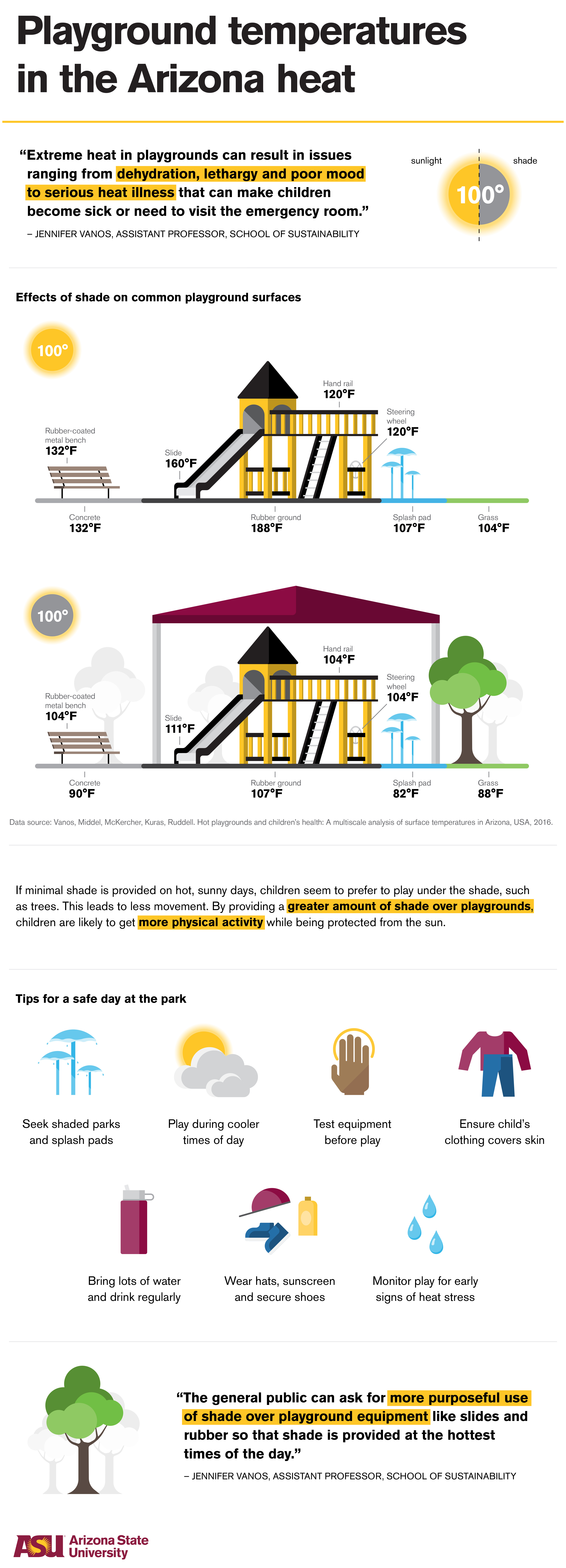Editor's note: As Arizona continues to battle COVID-19, please follow social distancing and face covering guidelines in public at all times, including playgrounds.
A day at the playground can be tempting on a bright sunny day, but in the Arizona heat, it can also be dangerous.
Children playing outside during Arizona summers can face 100 days or more of temperatures north of 100°F. Too often playgrounds use heat-retaining, unnatural surfaces in the middle of parks with no shade, especially in Phoenix. These unshaded playgrounds can act as mini heat islands, which can disincentivize physically active play or even lead to burns.
ASU urban climate researchers Jennifer Vanos and Ariane Middel believe proper shading of playgrounds may be a solution.
“Shade protects children from the sun and keeps playground equipment cool and touchable,” said Middel. Their research provides insight into these spaces, as well as tips on keeping children safe in the heat.
Infographic by Alex Davis/Media Relations and Strategic Communications
More Health and medicine

Reducing waste in medical settings
Health care saves lives, but at what cost? Current health care practices might be creating a large carbon footprint, according to ASU Online student Dr. Michele Domico, who says a healthier…

ASU offers bilingual counseling to Spanish speakers
Arizona is one of the five states in the nation with the highest percentage of Hispanic residents, according to the U.S. Department of Health and Human Services Office of Minority Health, and …

College of Health Solutions launches first-of-its-kind diagnostics industry partnership to train the workforce of tomorrow
From 2007 to 2022, cytotechnology certification examinees diminished from 246 to 109 per year. With only 19 programs in the United States, the cytology workforce that stands at the front line of…



